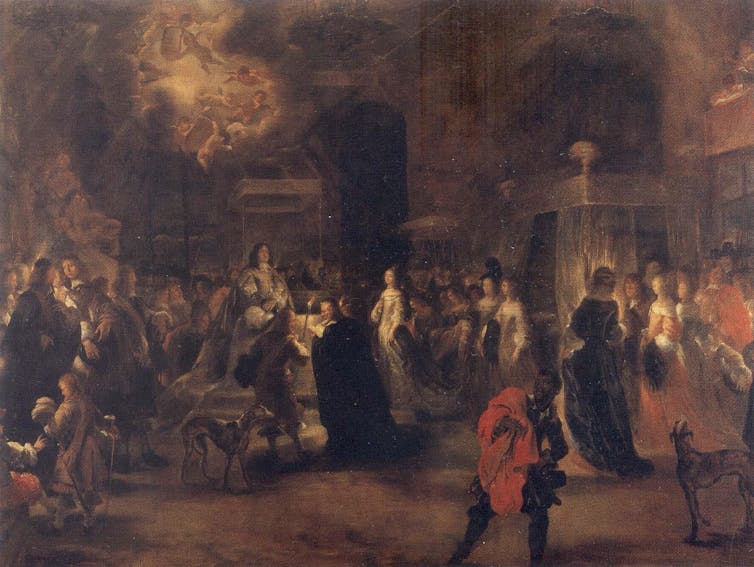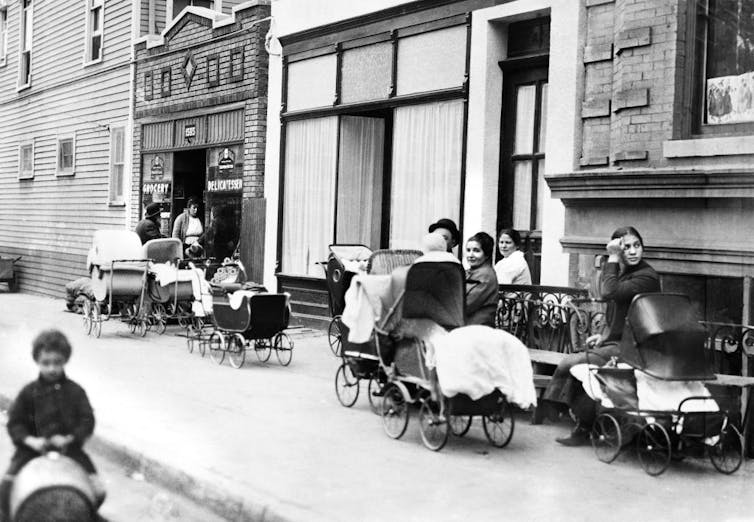Protestant ideas shaped Americans’ support for birth control – and the Supreme Court ruling protecti
Griswold v. Connecticut, decided in 1965, set the precedent for several other landmark cases about sex and privacy.
Sixty years ago, the Supreme Court ruled that married couples have a constitutional right to use contraception. Griswold v. Connecticut, decided in 1965, made it illegal for states to outlaw birth control for spouses – a right that would not be extended to single people until 1972.
Griswold granted married couples this right on the grounds of privacy. Though the Constitution does not specifically name an explicit right to privacy, justices argued that it could be inferred from several amendments – an idea cited in later rulings on abortion and LGBTQ+ rights.
According to the Griswold ruling, the right of privacy within marriage was “older than the Bill of Rights – older than our political parties, older than our school system.”
“Marriage is a coming together for better or for worse, hopefully enduring, and intimate to the degree of being sacred,” the majority opinion reads – it represents a coming together for a “noble” purpose.
In short, the Supreme Court framed marital sex as natural, intimate and, perhaps most importantly, sacred. These characteristics, they argued, allowed it to exist beyond the gaze of the law.
Here’s the thing, though: Historians know that marriage hasn’t always been a private affair. Nor has it always been treated as sacred – not under the law, at any rate. As a scholar completing a book on the history of religion and contraception, I argue that the attitudes toward marriage and contraception reflected in the Griswold decision were deeply rooted in Protestant thought.
Private and public
Throughout European history, royal couples getting married often had witnesses leading them to their bedrooms and remaining there – or waiting right outside. The marriage was not considered legally binding until it was consummated. At a time when royal weddings were often intended to shore up alliances, knowing that the marriage had been consummated ensured that any political agreements were binding and at least suggested that heirs would be legitimate.

Among the more “common folks,” today’s standard of marital privacy could not be achieved even within the family, simply because of space. In medieval and early modern Britain, whose legal system largely grounds American law, it was common for whole households to sleep or even live in just one room, including guests and apprentices. The reality of multipurpose, shared space was also the case in the American Colonies, on the frontier, and in the living quarters of enslaved people.
For much of its history, then, marriage was not the legalization of a private intimacy, but a public act made for a variety of political and economic reasons.
And while marriage was often understood as sacred, interpretations varied. Catholicism did consider marriage a sacrament but was not the most holy way to live – a status reserved for celibate priests and nuns.
At other times, marriage was not respected. Marriages between enslaved people, even when sanctioned by churches, held no weight in American law.
So why did the U.S. Supreme Court eventually assert that the state should not peer into the marital bedchamber?
Scholars such as Janet Jakobsen have argued that, during the Protestant Reformation, one of the ways that Protestants differentiated themselves from Catholics was by elevating marriage to the most sacred form of human sexuality.
Reformers such as Martin Luther criticized clerical celibacy, and were married. But the Protestant move toward married clergy was also about other kinds of freedom, according to Jakobsen. Religious and sexual freedom were intertwined: Marriage itself, not the church, became the institution where a couple could freely regulate their sexuality.
Praise for the pill
By the time the Supreme Court argued that marriage was, by nature, private and sacred, there was a long Protestant history of making that case.
But there was an even more recent Protestant history of making that argument specifically about birth control.
As new contraceptive options emerged in the 20th century, from the diaphragm to birth control pills, Christian leaders wrestled with what to think. The Catholic Church remained steadfastly opposed to contraception, although some Catholic theologians began to argue in favor of loosening the ban. Many Protestant denominations, meanwhile, slowly came to accept it – and then to endorse it.

Christians who came to support birth control framed it as a moral good: a tool that would allow married couples to have satisfying sex lives, while protecting women from the health risks of frequent pregnancies. Richard Fagley, the executive secretary of the the Commission of the Churches on International Affairs, was one of the architects of this new theological perspective. He argued in 1960 that medical knowledge, including contraception, was “a liberating gift from God, to be used to the glory of God, in accordance with his will for men.”
By the time the pill came on the market in the 1960s, liberal Protestants, as well as many conservatives, were applying ideas about “Christian duty” to a new theology of “responsible parenthood.”
The best kind of family, they argued, was a father with a steady job and a homemaker mother. Limiting family size could help make that financially possible – and decrease divorce, as well.
The National Council of Churches, an organization representing many Protestant and some Orthodox churches, wrote in a statement approved by most of its members that they acknowledged the value of sex in marriage with or without procreation, because it was central to the “mutual love and companionship” of the marriage bond.
That said, they still emphasized parenthood as “a divinely ordained purpose of marriage.” Parenthood was, in the council’s eyes, a “participation in God’s continuing creation, which calls for awe, gratitude, and a sense of high responsibility.”
When the Supreme Court struck down the constitutional right to an abortion in 2022, the majority opinion noted, “Nothing in this opinion should be understood to cast doubt on precedents that do not concern abortion.” Justice Clarence Thomas, however, wrote a concurring opinion calling for the court to revisit other decisions with similar reasoning, including the right to same-sex marriage and Griswold itself.
It seems important to look back on 1965, at the many voices that shaped the Griswold case, including secular feminists, medical doctors and Christian clergy. The decision’s supporters believed it would make women’s lives better, but also families’ lives – precisely by giving them privacy and autonomy.
Portions of this article originally appeared in a previous article published on May 24, 2022.
Samira Mehta receives funding from the Henry Luce Foundation.
Read These Next
AI-generated political videos are more about memes and money than persuading and deceiving
Don’t discount the threat of AI political videos fooling people, but for now, they’re mostly about…
Polytechnic universities focus on practical, career-oriented skills, offering an alternative to trad
Polytechnic universities try to incorporate skills-based learning into education.
The Ivies can weather the Trump administration’s research cuts – it’s the nation’s public universiti
While headlines focus on Harvard and Columbia, state universities train far more STEM students, power…





